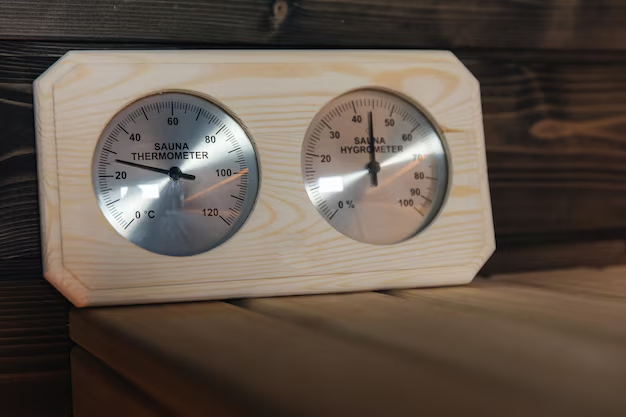How to Choose the Right Temperature Setting for Your Refrigerator
Setting the correct temperature for your refrigerator may not always be top of mind, but it plays a critical role in keeping your food fresh and safe to eat. It's not just about convenience; it's about health and efficiency too. In this guide, we'll explore the optimal refrigerator temperature, the science behind it, and practical tips to maintain your refrigerator for optimal performance.
🔍 Why Temperature Settings Matter
Food Safety
A key reason to set your refrigerator at the right temperature is food safety. Bacteria that cause foodborne illnesses thrive in certain temperature ranges. By maintaining a proper refrigeration climate, you minimize the risk of these harmful microorganisms growing in your stored food.
Food Longevity
The right temperature also affects how long food items last. Keeping your refrigerator within a specific range can help extend the shelf life of perishable items, reducing waste and saving you money.
Energy Efficiency
Your fridge is one of the most electricity-hungry appliances in your home. If it’s set too cold, it wastes energy; too warm, and your food spoils. An optimal setting ensures that your fridge runs smoothly without consuming excess power, contributing to a more eco-friendly and cost-efficient household.
🌡️ Ideal Refrigerator Temperature
Experts generally agree that the ideal refrigerator temperature falls between 35°F and 38°F (1.7°C to 3.3°C). These temperatures are cold enough to prevent bacteria from growing, yet not so cold that your food freezes.
How to Measure the Temperature
- Internal Thermometer: Many modern refrigerators come with built-in thermometers. If your fridge doesn't have one, investing in an inexpensive appliance thermometer is wise.
- Placement Matters: Place the thermometer in the center of your fridge for an accurate reading. Avoid the doors, as they often fluctuate in temperature when opened.
🍎 Pro Tips for Maintaining Temperature
Minimize Door Opening
Every time the refrigerator door opens, cold air escapes, and warm air enters. This fluctuation can raise the internal temperature, making your fridge work harder to cool down again. To mitigate this:
- Plan what you need before opening the fridge.
- Ensure the door seals properly without gaps.
Regular Maintenance
Regular maintenance can enhance the performance and lifespan of your refrigerator:
- Clean Coils: Dusty coils make your fridge work extra, leading to higher energy use. Clean them every six months.
- Check Gaskets: The rubber seals around the refrigerator door can wear out over time. Ensure they are clean and airtight.
- Proper Ventilation: Ensure there’s enough space around your fridge for air to circulate, which helps the appliance function efficiently.
Load Management
A well-organized fridge plays into temperature regulation:
- Don’t Overstuff: Air needs to circulate for optimal cooling. Overloading restricts this flow, affecting the temperature.
- Separate Zones: Each zone in your refrigerator can have its own micro-climate. Store foods according to their required temperatures for best results.
🧊 Special Cases: Freezer and Additional Compartments
Freezer Settings
The recommended setting for your freezer is typically 0°F (-18°C). At this temperature, food remains properly frozen, preserving nutrients and flavor while preventing bacterial growth.
Special Compartments
Modern refrigerators come with features like crisper drawers and deli sections. These are designed to optimize the storage conditions for specific food types:
- Crisper Drawers: Ideal for fruits and vegetables, these keep air humid to maintain crispness and freshness.
- Meat Drawers: Feature slightly colder air to keep meats safely chilled.
🌿 Eco-Friendly Energy-Saving Tips
Reducing the environmental impact and energy consumption of your refrigerator is beneficial for your wallet and the planet.
Smart Shopping Habits
Consider your shopping habits to optimize refrigerator efficiency:
- Frequent Smaller Shops: Less packed shelves mean better airflow and temperature stability.
- Prep Wisely: Store leftovers in small, shallow containers—they cool faster and more uniformly.
Upgrade Efficiently
If your refrigerator is over 15 years old, it might be time to consider an upgrade for a newer, energy-efficient model that will perform better and use less energy.
📋 Quick Summary for Optimal Refrigerator Use
Here's a handy guide to keep your refrigerator running smoothly and efficiently:
- 🧊 Optimal Temperature: Aim for 35°F to 38°F in the fridge, 0°F in the freezer.
- 🚪 Minimal Door Opening: Keep the door closed as much as possible to prevent temperature fluctuations.
- 🛠️ Regular Maintenance: Clean coils, check seals, and ensure proper airflow.
- 📏 Proper Organization: Avoid overloading, use each compartment for its designated type of food.
- 💡 Energy Efficiency: Upgrade to an energy-efficient model if necessary, and shop smart to maintain an ideal environment.
Bringing It All Together
Understanding and maintaining the right temperature in your refrigerator ensures food safety, longevity, and energy efficiency. Whether you're running a household or managing a commercial kitchen, making informed decisions about your fridge settings can make a surprising difference in your daily life. Keep your appliances in good condition and practice responsible habits, and you'll enjoy fresh food and lower energy bills. By doing so, you'll not only improve health and safety in your home but also contribute to a greener, more sustainable environment.
